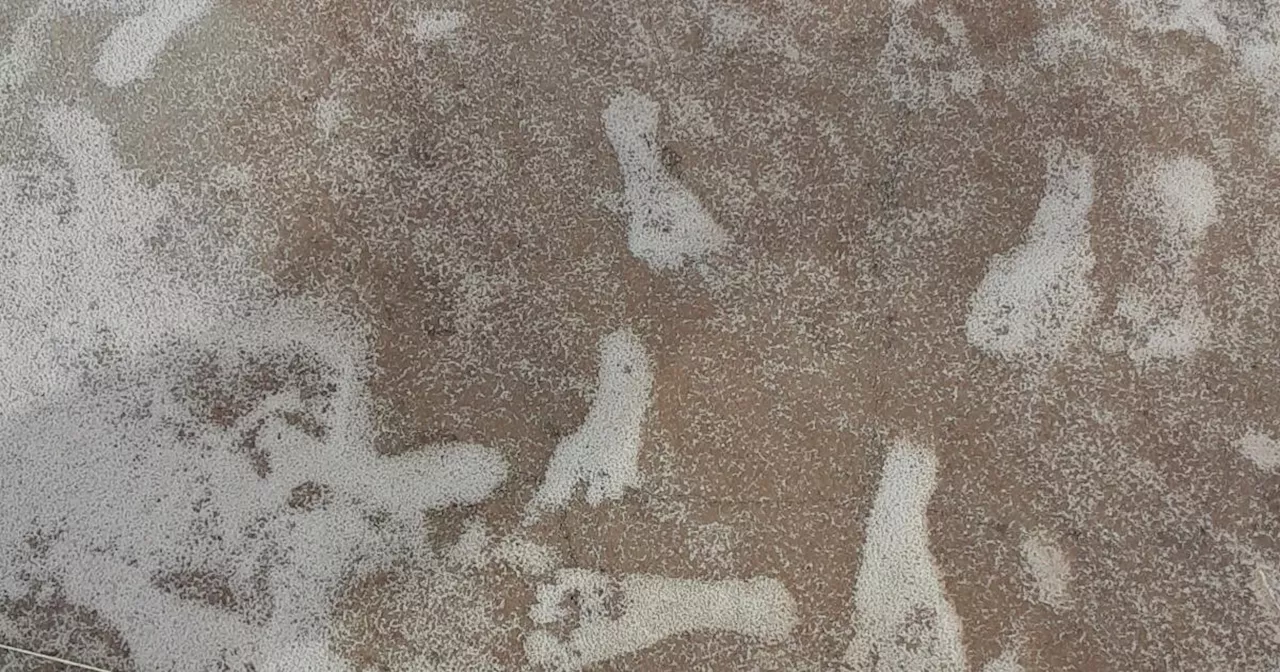New research finds that humans might have first entered the New World not over the Bering land bridge between Russia and Alaska, but thousands of years earlier.
The oldest direct evidence of human presence in the Americas are likely fossilized human footprints found in New Mexico, challenging once-conventional wisdom regarding humans migrating to the New World from Russia roughly 15,000 years ago, new research confirms. The new discovery suggests that the first people actually arrived in the Americas much earlier than previously believed.
The estimated age of the footprints was first reported in Science in 2021, but Thomas Urban, an archaeological scientist at Cornell University, who was involved in the study, said there was controversy around the dates. 'This is a subject that’s always been controversial, because it’s so significant — it’s about how we understand the last chapter of the peopling of the world,' said Urban, who was not involved in the new study affirming the dates.
White Sands is unique, because there’s no question these footprints were left by people, it’s not ambiguous,' said Jennifer Raff, an anthropological geneticist at the University of Kansas, who was not involved in the study. Ancient footprints can provide archaeologists with a snapshot of how humans walked and interacted. The Associated Press contributed to this report.
Brasil Últimas Notícias, Brasil Manchetes
Similar News:Você também pode ler notícias semelhantes a esta que coletamos de outras fontes de notícias.
 Further evidence points to footprints in New Mexico being the oldest sign of humans in AmericasNew research shows that fossil footprints discovered at the edge of an ancient lakebed in New Mexico's White Sands National Park date back to between 21,000 and 23,000 years ago
Further evidence points to footprints in New Mexico being the oldest sign of humans in AmericasNew research shows that fossil footprints discovered at the edge of an ancient lakebed in New Mexico's White Sands National Park date back to between 21,000 and 23,000 years ago
Consulte Mais informação »
 Further evidence points to footprints in New Mexico being the oldest sign of humans in AmericasNew research shows that fossil footprints discovered at the edge of an ancient lakebed in New Mexico's White Sands National Park date back to between 21,000 and 23,000 years ago.
Further evidence points to footprints in New Mexico being the oldest sign of humans in AmericasNew research shows that fossil footprints discovered at the edge of an ancient lakebed in New Mexico's White Sands National Park date back to between 21,000 and 23,000 years ago.
Consulte Mais informação »
 Further evidence points to footprints in New Mexico being the oldest sign of humans in AmericasNew research shows that fossil footprints discovered at the edge of an ancient lakebed in New Mexico's White Sands National Park date back to between 21,000 and 23,000 years ago. Previously, archaeologists thought human ancestors arrived about 15,000 years ago. The research was published Thursday in the journal Science. Scientists analyzed conifer pollen and quartz grains found at the site to reach date estimates. Earlier research that analyzed seeds of aquatic plants found at the site also produced similar date estimates. Ancient humans at White Sands lived alongside giant ground sloths, bison and other megafauna.
Further evidence points to footprints in New Mexico being the oldest sign of humans in AmericasNew research shows that fossil footprints discovered at the edge of an ancient lakebed in New Mexico's White Sands National Park date back to between 21,000 and 23,000 years ago. Previously, archaeologists thought human ancestors arrived about 15,000 years ago. The research was published Thursday in the journal Science. Scientists analyzed conifer pollen and quartz grains found at the site to reach date estimates. Earlier research that analyzed seeds of aquatic plants found at the site also produced similar date estimates. Ancient humans at White Sands lived alongside giant ground sloths, bison and other megafauna.
Consulte Mais informação »
 Further evidence points to footprints in New Mexico being the oldest sign of humans in AmericasNew research shows that fossil footprints discovered at the edge of an ancient lakebed in New Mexico's White Sands National Park date back to between 21,000 and 23,000 years ago.
Further evidence points to footprints in New Mexico being the oldest sign of humans in AmericasNew research shows that fossil footprints discovered at the edge of an ancient lakebed in New Mexico's White Sands National Park date back to between 21,000 and 23,000 years ago.
Consulte Mais informação »
 Further evidence points to footprints in New Mexico being the oldest sign of humans in AmericasThe evidence challenges the once-conventional wisdom that humans didn’t reach the Americas until a few thousand years before rising sea levels covered the Bering land bridge between Russia and Alaska.
Further evidence points to footprints in New Mexico being the oldest sign of humans in AmericasThe evidence challenges the once-conventional wisdom that humans didn’t reach the Americas until a few thousand years before rising sea levels covered the Bering land bridge between Russia and Alaska.
Consulte Mais informação »
